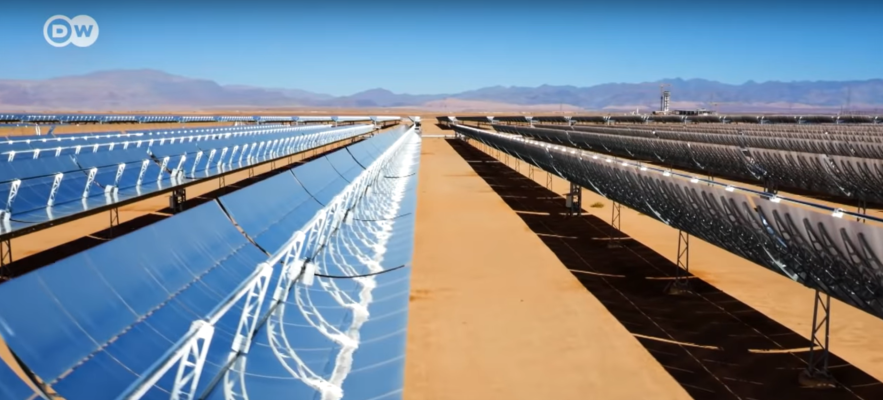Our hunger for energy goes beyond all limits and will double in the next 20 years. But what available technologies could meet the growing thirst for electricity? And will we also have to cut power consumption? What can Europe learn from China? And could “decentralization” into so-called “microgrids” be the future of energy?
What is supposed to be the largest and most efficient solar power plant in the world is currently being built near the Moroccan desert city of Ouarzazate. The Noor solar power plant, which means “Light” in Arabic, is due to be completed by 2020, when it will comprise 4 units. In its final expansion stage, Noor will supply a total of 1.3 million households with electricity. The sun is the most powerful source of energy in our galaxy and could theoretically supply all of humanity with electricity with ease, but what technologies do we have to usher in this new era of electricity?
Could wind power be a more promising alternative? Wind farms are being built at full speed around the world, but is wind energy really viable? Is the enormous investment in wind turbines at all worth it and can it meet our demand for electricity?
China has shown how quickly you can push ahead with the switch from fossil to renewable energy sources. China’s enormous economic growth in recent decades has made the Middle Kingdom the world’s largest energy guzzler. But China is also the world’s largest energy producer. A veritable energy revolution is currently underway.
Almost 20 percent of the ever-growing demand for energy is now met by renewable technologies, and a large proportion of the solar cells used worldwide already come from China. What can Europe learn from China? One key to avoiding an electricity crisis could be “decentralization,” so-called “microgrids.” A quiet little town in the Swabian Allgäu region has shown it is possible to produce eight times as much electricity as it needs itself. Check out part one of this insightful documentary below…
Part Two…
Mobility is one of the world’s biggest drivers of energy consumption. The switch to renewable energies will affect people’s everyday lives. How will we get from A to B when fossil fuel reserves run out in the future? How will we fly around the globe without oil and gas?
Mobility is one of the world’s biggest drivers of energy consumption. The transportation of people and goods by road, rail and air accounts for around 34 percent of total energy consumption. The electrification of mobility has already begun and, as the example of Norway shows, it could be one solution – but not for trucks and industrial vehicles. Is fuel cell technology a viable alternative here? Japan firmly believes it is.
Could electrification also revolutionize air transport? Siemens and Airbus want to make aviation history here and are working on a regional aircraft with a hybrid electric drive – but it won’t work for long-haul flights. But scientists from ETH Zurich and the German Aerospace Center are working on a spectacular solution to the long-haul problem: synthetic kerosene from sunlight.
An alternative to heavy oil is also being sought for shipping. Neither electric propulsion nor fuel cells will work for gigantic cruise liners and above all for the container ships that account for a large part of world trade. Methanol, which can be produced sustainably, could be the answer and a large prototype vessel is currently undergoing trials.
In addition to mobility, digitalization is one of the great power guzzlers of the 21st Century. Streaming services, cloud computing and the Internet of Things are all increasing our energy requirements. Experts anticipate consumption will increase by around 40% over the next 12 years. Microsoft’s server farms alone will consume as much electricity as a medium-sized European country. Where’s that power going to come from? We have to cut back our consumption.
This will also apply to our future lives. The world’s first self-sufficient apartment building is located in Switzerland and shows how you can become energy independent. The future will be in networked houses that exchange electricity among themselves. Check out part two below…
If you like this idea, be sure to share it with your friends and inspire someone you know. Anything becomes possible with just a little inspiration…

